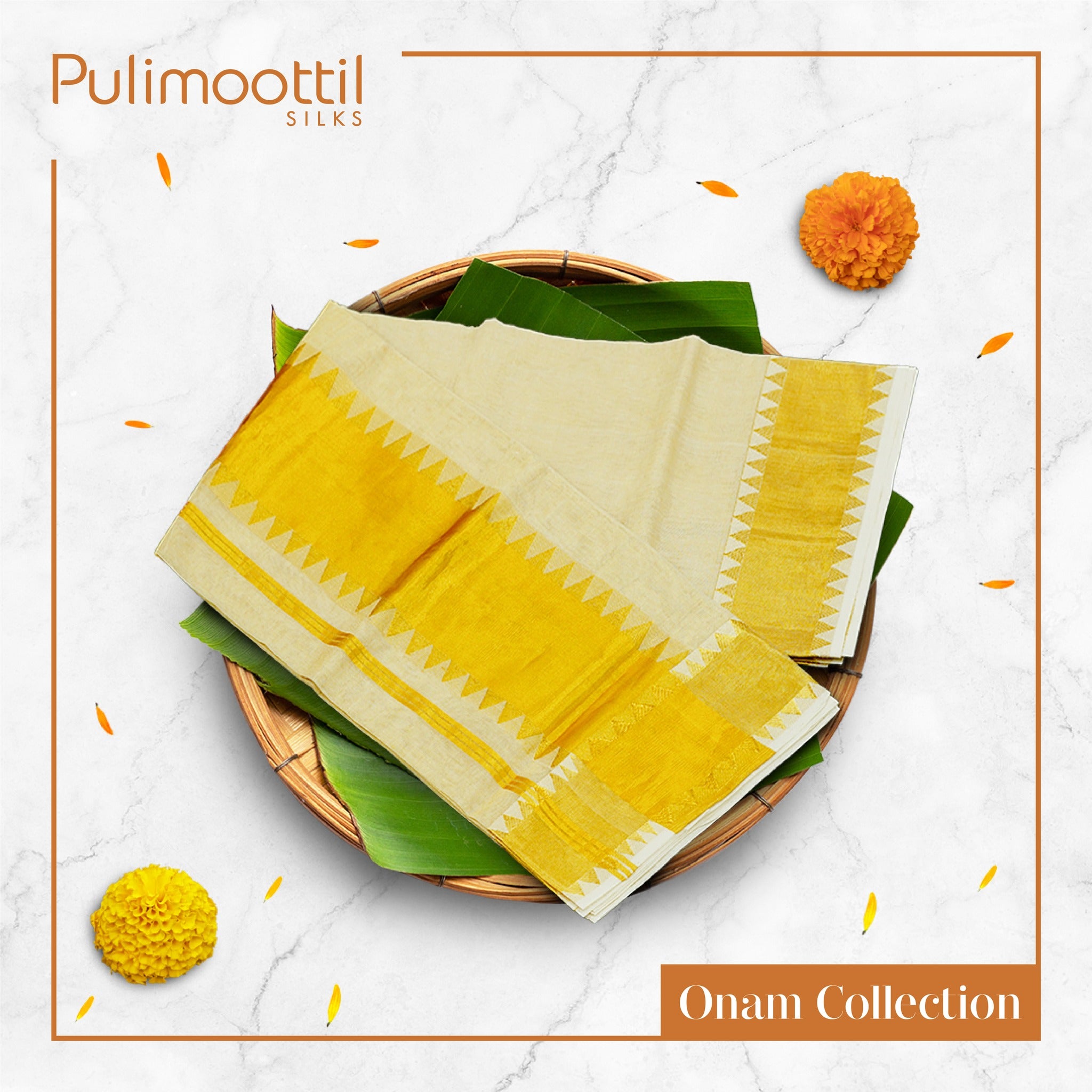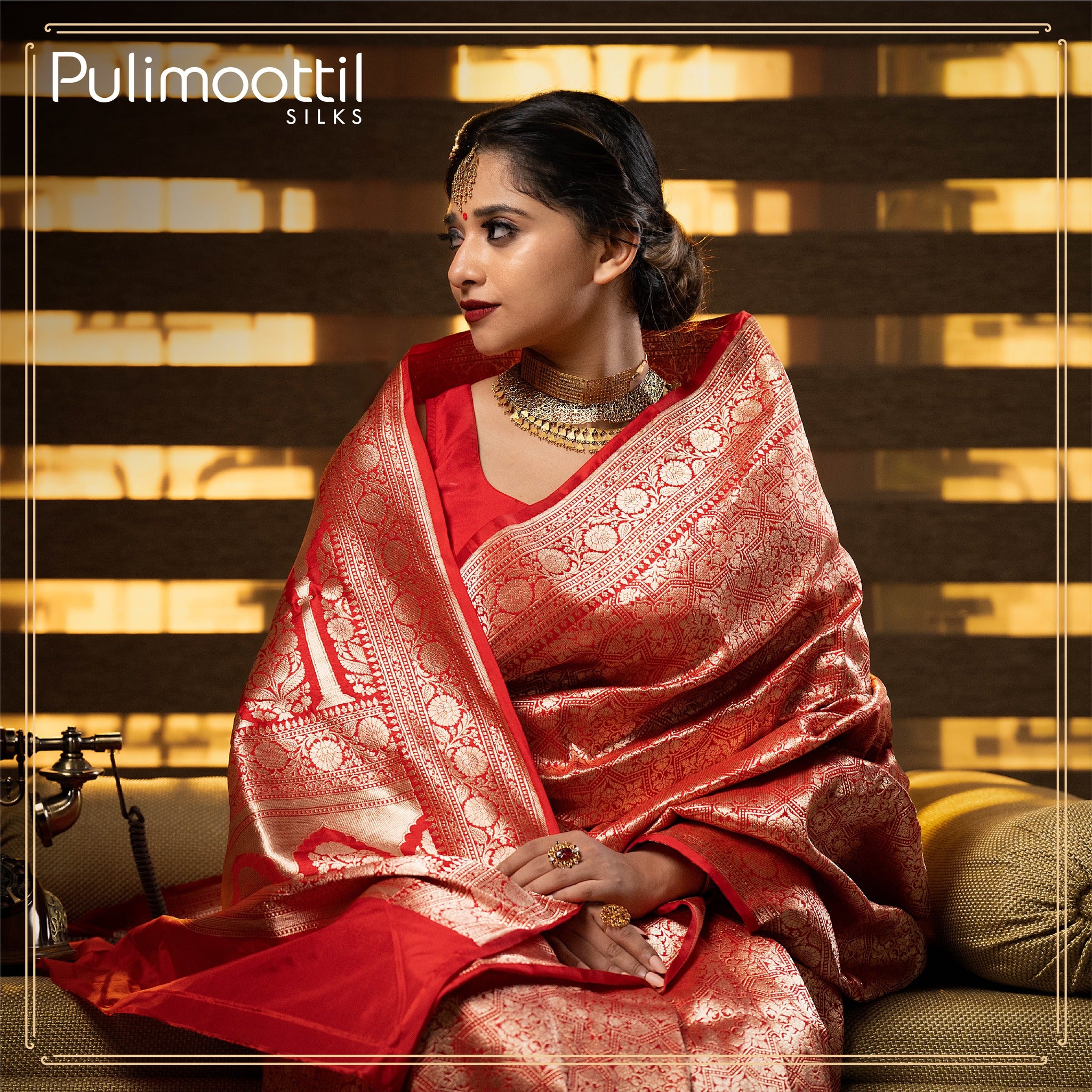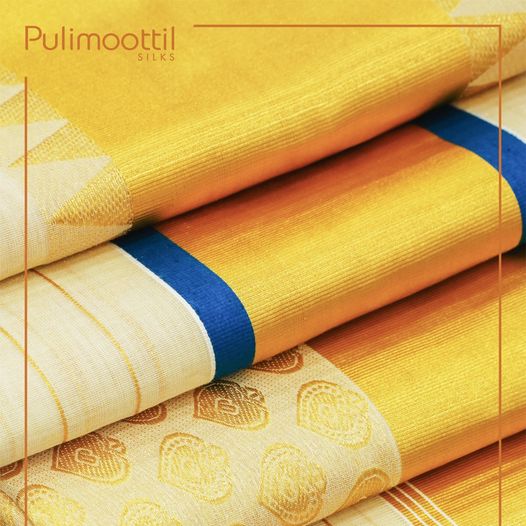
The Significance of Kasavu: Unravelling the Golden Threads of Onam Sarees
The Indian state of Kerala is a land of vibrant traditions, rich cultural heritage, and picturesque landscapes. Among the many cherished customs of Kerala, one stands out for its timeless elegance and allure - the Kasavu saree. Kasavu sarees, also known as Onam sarees or Settu Mundu, are a quintessential part of Kerala's cultural identity. Their distinct golden borders, called Kasavu, hold deep cultural significance and tell tales of the region's glorious past. In this blog, we delve into the history, symbolism, and cultural value of Kasavu sarees, revealing why they continue to be beloved attire for women across generations.
The Origins of Kasavu Sarees:
Kasavu sarees trace their origins back to ancient times. Historically, the threads used for the Kasavu were made of pure gold, symbolising prosperity, wealth, and a sense of luxury. However, as gold became increasingly scarce and expensive, craftsmen began using a mix of gold and copper-coated silver threads, which gave the sarees their signature golden hue while making them more affordable. The process of weaving these sarees has been passed down through generations, preserving the craftsmanship and artistry associated with them.
Symbolism of the Golden Borders:
The golden borders, or Kasavu, on Kerala sarees play a vital role in defining their cultural significance. The symbolism behind the golden threads extends beyond mere aesthetics and holds deeper meanings that reflect the essence of Kerala's ethos:
Prosperity and Affluence:
The golden borders represent wealth and prosperity, making the Kasavu saree a symbol of abundance and good fortune. It is often worn during auspicious occasions, weddings, and festivals, as it is believed to bring blessings and positivity to the wearer.
Cultural Heritage:
Kerala's Kasavu sarees are a manifestation of the state's rich cultural heritage. They serve as a link to the past, connecting the modern generation to their ancestors' traditions and customs. By adorning the Kasavu, women celebrate their identity as inheritors of a timeless legacy.
Purity and Sanctity:
The pristine white colour of the saree body signifies purity and simplicity. This combination of purity and opulence in the Kasavu saree is reflective of the harmonious coexistence of luxury and modesty in Kerala's culture.
Embodying Nature:
The white colour of the saree is believed to represent the pure and unspoiled beauty of nature. The golden borders mirror the sun's rays, evoking imagery of the sun-kissed Kerala landscapes. The saree, thus, becomes a tribute to the region's lush greenery and the bounty of nature.
Cultural Unification:
The Kasavu saree serves as a symbol of unity and equality among the women of Kerala, transcending differences in age, caste, or religion. Regardless of their background, women from all walks of life don this traditional attire during festivals, bridging gaps and fostering a sense of togetherness.
The Stories the Kasavu Sarees Tell:
Beyond the intrinsic symbolism, Kasavu sarees also tell stories of the society, history, and people of Kerala. The motifs and designs on the saree often carry narratives that have been passed down through generations:
Temple Architecture:
Many Kasavu sarees feature designs inspired by the intricate carvings found on ancient Kerala temples. These motifs not only pay homage to the state's magnificent temple architecture but also encapsulate the spiritual essence of the land.
Celebrating Nature:
The motifs of flowers, birds, and animals found on Kasavu sarees depict Kerala's close association with nature. Each design reflects the state's harmonious coexistence with the environment and its deep-rooted respect for all living beings.
Historical Events and Legends:
Some Kasavu sarees are adorned with motifs that narrate historical events or myths from Kerala's past. These designs immortalise the tales of valour, love, and sacrifice that have shaped the state's history.
Cultural Traditions:
Certain patterns on Kasavu sarees signify specific rituals or cultural practices of Kerala. They serve as a visual reminder of the numerous ceremonies and customs that continue to be an integral part of the region's identity.
Kasavu sarees are not merely garments; they are a reflection of Kerala's soul and spirit. Through the golden borders, these sarees speak of prosperity, heritage, and the harmony between simplicity and grandeur. They carry stories of nature, art, and history, narrating the saga of Kerala's illustrious past. Beyond their artistic beauty, Kasavu sarees remain a symbol of cultural unity and shared traditions for the people of Kerala.
In a rapidly changing world, the Kasavu saree endures as a timeless emblem of cultural identity and values, cherished by Keralites and admired by people worldwide. As they continue to be draped on special occasions and festivals, these golden-threaded sarees preserve the essence of Kerala's cultural tapestry for generations to come.


